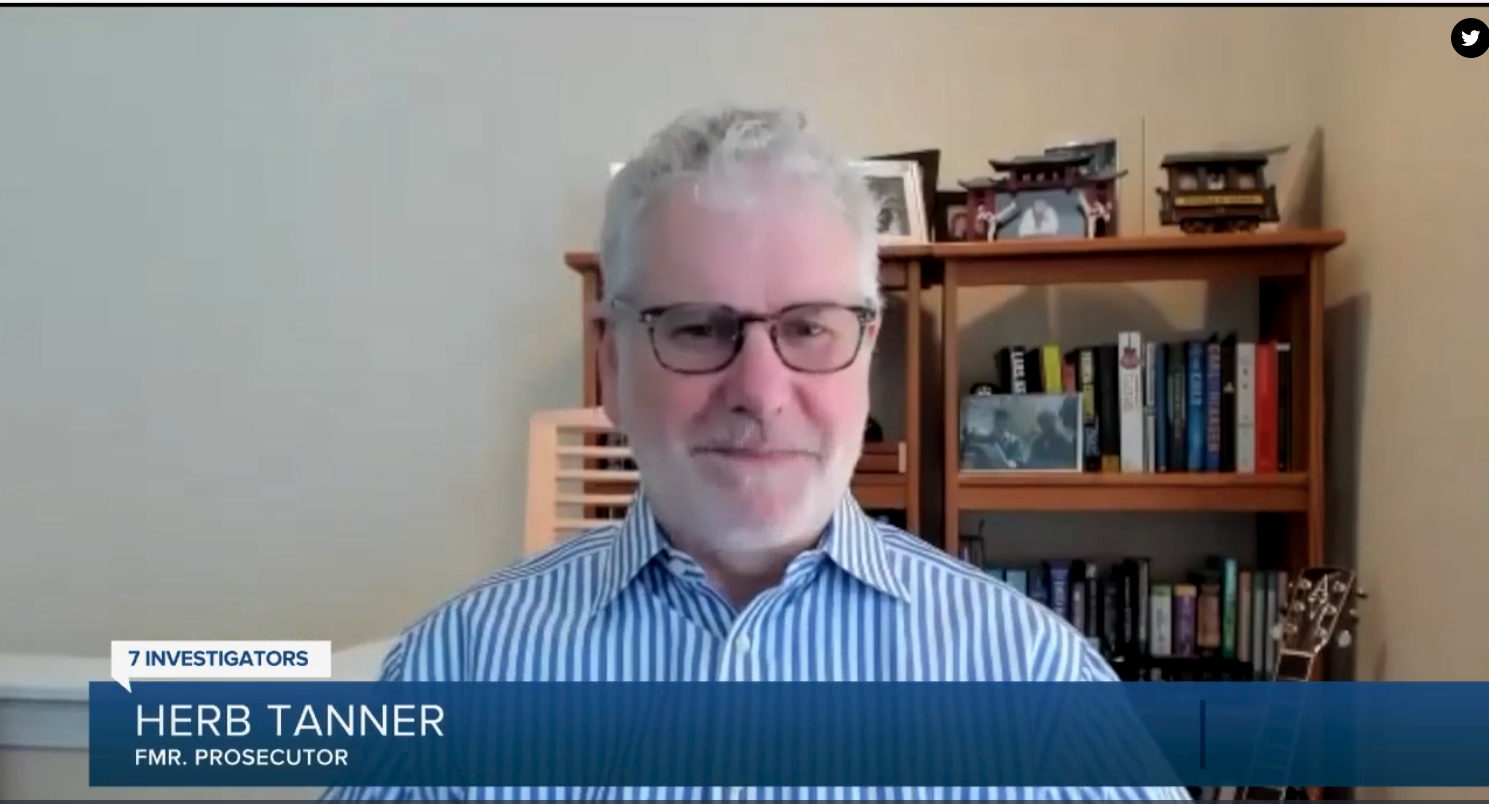Factum Probans March 2022
Who can Petition for an ERPO?
Of course, states vary dramatically in who is permitted to file a petition. There’s no deficit of who to choose from. Law enforcement officers are universally permitted to file petitions in all states. Some states permit immediate family and household members to file. Add to the group dating partners, mental healthcare providers, school officials, and co-workers, and it starts to look like everyone except the next-door neighbor.
But if anyone can petition for an ERPO, aren’t they then ripe for abuse? Won’t it become a tactic to get a leg up in a divorce case or dispute between co-workers? Let me say upfront that I believe the issue of misuse of judicial processes is a bugbear. The issue was raised when personal protection orders were authorized, and judges complained that petitions were misused for things like disputes between neighbors or bullying in the schoolyard. My experience was that if there was misuse, it was not widespread, and statutory fixes quickly followed. The floodgates of frivolous petitions did not open up, and courts had and have tools to address the rare case of misuse.
Reviewing petitions for an ERPO through such a jaundiced lens is a bigger problem. An unconscious or, God forbid, conscious belief that most petitions are suspect, quite likely frivolous, especially when filed by an angry spouse (likely the wife) can lead to a reluctance to issue orders. That reluctance can have serious, even deadly consequences.
That said, the ability to petition for an ERPO shouldn’t be open to everyone. Making everyone an interested party invites not just the rare abuse of process problems, it also raises real issues around when it is appropriate to invoke the power of the state to restrict a personal right. So, if not everyone can petition, who can?
Every state permits law enforcement and/or prosecuting attorneys to petition. A great many include family members, sometimes narrowly defined and sometimes more broadly-e.g. including dating partners. A smaller number include medical health professionals and school personnel in the list. Only very few include co-workers.
What risk must be established to get an ERPO?
What is the basis for issuing an order, and what is the appropriate burden of proof sufficient to justify issuing an ERPO raise serious privacy and constitutional concerns? The standards for issuance implicate not only one’s rights under the 4th Amendment, but the personal rights guaranteed by 2nd Amendment precedent. The balance is a delicate one.
Let’s consider the question of what must be shown, keeping in mind the stated goal of reducing firearm violence. Here again there is no lack of choices. Must the petitioner show that respondent poses a significant danger to self or others? Or an extreme risk of harm to self or others? Are these even different standards?
Rhode Island is an example of a statute using the “significant danger” standard. RI Gen. Laws 8-8.3-5. Vermont’s statute sets the standard at “extreme risk”. VT Stat. Tit. 13 Sec. 4054 All very well and good, but further definition would probably be helpful.
Interestingly, some states specifically require that the risk justifying the issuance of an ERPO must come from the possession of firearms. That is, the petitioner cannot rely on showing a generalized risk of harm to self or others, but rather must establish that the risk flows from respondent’s possession of firearms.
Both statutes above, and a significant number of others, provide some guidance to courts by setting out evidence that can be considered in determining danger or extreme risk. The statutes include what one would expect, like whether the respondent has harmed anyone in the past, made threats to harm another, or has threatened or attempted suicide. Some states add to that the respondent’s mental health history, evidence of substance abuse, evidence of recent acquisition of firearms, and evidence of respondent’s intent to possess firearms. In a nod to modernity, Rhode Island’s statute includes evidence of unlawful, threatening, or reckless use or brandishing of a gun, including such acts “taken or displayed through social media.”
Whatever risk must be proved, in the end the whole question is left to be decided where it always is, with the court. Courts will have more or less experience in judging the risks of future action, depending on their jurisdiction. A court that routinely presides over mental health commitment proceedings will be well-versed in making this kind of decision. A court of general jurisdiction will have considerable related experience, for instance, deciding the risk of harm in setting conditions of bail. The standard that at first glance seems squishy and left too much to the court’s discretion is really one that we have been comfortable with for centuries, even when it means depriving someone of their liberty.
What is the burden to be met?
Here the state has to make several significant policy choices. If the statute is to allow the issuance of ex parte emergency orders, what should be the burden of proof? Should the burden be less than that required for an order of longer duration issued after a hearing?
For orders of longer duration issued after a hearing, a majority of states choose the clear and convincing standard, with New Mexico and Washington imposing the lesser preponderance standard.
Most statutes that permit ex parte orders rely on a lesser standard, ranging from a preponderance of evidence to a reasonable belief.
Procedural Protections, Notice and Hearing
It looks like the state legislatures were informed by the experience with domestic violence protection orders when they set about drafting the red-flag laws. I remember well working out the kinks in Michigan’s protection order laws around the issues of issuing ex parte orders, enforcing orders by arrest when the order had not been served, what constitutes sufficient notice and opportunity to be heard, and more that I can’t remember. The current red-flag statutes share many procedural safeguards with those orders of protection.
Ex Parte Orders
Given the possibility that notice to the respondent would spark the harm sought to be prevented, most states give the court authority to issue temporary emergency orders without notice to the respondent. To protect the respondent’s rights, emergency orders are of limited duration, typically remaining in effect until a hearing on the petition can be held. All statutes provide some procedure for giving the respondent notice of the temporary order and provide an opportunity to be heard at a full hearing. A majority of states opt to require the court to set a hearing within a short time – 14 days is common - and require that time and date of the hearing be made part of the ex parte order.
Only one state, Oregon, opts for giving the respondent notice of his or her right to a hearing, putting the onus on the respondent to exercise the right to demand a hearing within 30 days. If the respondent fails to make the request, the order becomes a permanent order.
Mental Illness and Substance Use Disorders
Comparison between mental health commitment proceedings and ERPO actions is inevitable. The two share certain standards expressed in similar language, and both call upon the court to temporarily deprive the respondent of the free exercise of constitutional rights after a determination of risk. But there are significant differences, the primary being that mental health commitment requires proof that the respondent poses a risk of harm to self or others because of a mental illness, while ERPOs can be issued without a finding of mental illness.
Before going any further, there is an important point to be made here. The vast majority of those with mental illness are not more likely to commit acts of violence. They are, in fact, much more likely to be victims of violence. The hyper-focus on the mental health status of some mass shooting perpetrators, and the concentrated effort to keep firearms away from “those that shouldn’t have guns” - read, those with mental illness – is largely a distraction. We often conflate conditions like personality, antisocial or sociopathic disorders with serious illnesses like schizophrenia or other psychopathy that separates one from reality. The latter group can often be treated successfully with medications in combination with other treatments. They also are those most likely to be treated by community mental health providers, and more likely to be subject to involuntary commitment proceedings. Those in the former category, are unlikely to be identified as having a mental illness by the public mental health system. Personality or antisocial disorders are not considered serious mental illness, even though those with such disorders can be filled with rage and lack empathy. Michael S. Rosenwald, “Most mass shooters aren’t mentally ill. So why push better treatment as the answer?” The Washington Post, May 18, 2016.
This not to say that people with mental illness cannot be violent. Even as I write this there are headlines in a neighboring community about a man with mental illness, no longer taking medications, who stabbed two people at a local store.
Undoubtedly, the respondent’s mental health and substance use disorder history can be relevant to the determination of risk. That is how most states treat the issue, expressly permitting the court to consider those things in determining whether to issue an order. A handful of states permit mental health or medical professionals to file petitions requesting an ERPO. Additionally, a few states permit the court to order the respondent be evaluated for behavioral and/or substance use disorder problems. Others permit the court to refer the respondent to the local community behavioral health provider, or at least notify the provider of potential issues.
Indiana and Oregon appear at different ends of spectrum on the issue of respondent’s mental health status. Indiana defines a “dangerous” person as one who presents an imminent risk of personal harm to self or another, or a person who “(A) has a mental illness (as defined in IC 12-7-2-130) that may be controlled by medication, and has not demonstrated a pattern of voluntarily and consistently taking the individual's medication while not under supervision; or (B) is the subject of documented evidence that would give rise to a reasonable belief that the individual has a propensity for violent or suicidal conduct.” Ind. Code §35-47-14-1. By this definition Indiana explicitly makes the respondent’s mental illness, and refusal to voluntarily take treatment medications, one, but not the only, factual predicate for seizing firearms and prohibiting future possession.
On the opposite end is Oregon. Its statute sets out a list of factors a court “shall consider.” This includes things like a history of suicide attempts, past threats of violence, and previous convictions for certain criminal offenses. The mental health status of the respondent is noticeably absent from the list.
There is a catch-all provision at the end allowing consideration of any “additional information the court finds to be reliable,” which ostensibly allows consideration of the respondent’s behavioral health. However, the court “"may not include in the findings any mental health diagnosis or any connection between the risk presented by the respondent and mental illness." ORS 166.527.
Relinquish Firearms or Seizure by Law Enforcement
At the point of the process where law enforcement presents itself on the respondent’s doorstep and serves the order, there is a fair amount of variation about what is required of the petitioner, and what law enforcement is permitted to do. Universally, the respondent is ordered to relinquish or surrender any firearms they own or possess. What happens afterwards presents some interesting policy choices.
In some states the law enforcement agency with jurisdiction where the respondent resides is required to store the firearms for the duration of the order. I’m confident that this probably made law enforcement agencies none too happy. Some laws specifically provide for custody by third parties, either a federally licensed firearm dealer or a third-party designated by the respondent who is not prohibited from possessing firearms. If someone else turns out to own a seized firearm, many statutes direct the firearm returned to them, sometimes with the proviso that they acknowledge they cannot give it back to the respondent or allow access or constructive possession of it.
Though not specifically in the law, it appears that law enforcement or the federally licensed dealer possess the firearms as bailee; the respondent’s ownership interest is not extinguished. It would be an interesting data set to see if there are significant complaints from respondents about the storage and maintenance of seized firearms after the order is lifted or expires.
A number of states also require the respondent to turn over their license to carry concealed weapons, or a firearm identification card.
But what if the respondent does not turn over all firearms? Some states specifically direct the ERPO order to include an order authorizing a search for all firearms identified in the petition as a means of ensuring compliance. A deviation from the traditional search warrant procedure may bother some constitutional scholars, but none of the laws permit a general search, and none of the red-flag statutes permit the court to authorize a search upon anything less than probable cause.
For those states that do not authorize a search police are left with returning to court to secure a search warrant. A few direct the court issuing the ERPO to preside over the search warrant proceedings.
What is Prohibited?
Until now I’ve talked mostly about owning or possessing firearms. Most statutes cast a broader net, specifically including a prohibition on purchasing a firearm during the duration of the order. A substantial plurality of states include a prohibition on ammunition. What constitutes a firearm is usually but not always defined by reference to the definition in other statutes. In something of a curiosity, Massachusetts includes with firearms and ammunition, prohibiting ownership, possession and control of a rifle, shotgun, “weapon”, and machine gun. Is a machine gun not a firearm under Massachusetts’ law? Are there a lot of machine gun-toting citizens of the Commonwealth?
Enforcement During the Duration of the Order
Apart from the initial seizure, how can an order be enforced? The choices are intriguing. Is a subsequent violation a criminal offense, or punishable by contempt proceedings? Does probable cause to believe that the respondent possesses a gun in violation of the order justify a warrantless arrest, or must law enforcement initiate some proceeding to secure an arrest warrant? Or is a search warrant and seizure of the firearm the only recourse?
To nobody’s surprise, states have opted for a variety of enforcement mechanisms. Rhode Island’s law subjects violators to contempt proceedings, but specifically does not preclude other civil or criminal remedies. Any respondent who violates an order of which they had actual notice is guilty of a 10-year felony. More than a few states follow Indiana’s lead, making violation a misdemeanor. Be mindful that the criminal and contempt provisions may not be in the red-flag law itself, but in other statutes or even court rules.
As a final note on enforcement, most every statute requires ERPOs be submitted to NICS and/or statewide law enforcement databases. These should be considered enforcement tools of a kind, as a background check through NICS or a state database may stop a sale to a respondent.
Other issues
Whenever the courts stray into matters to do with mental or physical health, privacy rights under HIPAA and other federal or state laws are thrown into the mix. I’ll write separately about that in the coming weeks.
One issue I don’t see addressed is whether full faith and credit will be given to orders from other jurisdictions. Any prohibition entered into NICS will be discovered by a gun dealer in another state, which means that a respondent can’t move to the state next-door and buy a gun from a licensed dealer. But we know that the background check system is imperfect at best.
What happens if a respondent subject to an ERPO issued by a New York court moves to Virginia and buys a firearm through a private sale? If Virginia law enforcement become aware of their possession contrary to the New York order, is there any mechanism for enforcement similar to that in place for domestic violence protective orders? I don’t believe there is but would happily accept being proved wrong. I can see legitimate arguments on both sides. Should VAWA encourage full faith and credit statutes in the same way it did for other protective orders? It is a thorny thicket, to be sure.



